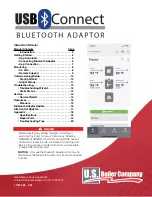
Controls and Indicators
However, if you install several HP servers on one circuit, precautions are necessary. If there
is a power failure and power is then restored, all the servers immediately begin to draw inrush
current at the same time. If the circuit breakers on the incoming power line have insufficient
capability, the breaker may trip and thus prevent the servers from powering up.
When preparing your site for installation, allow for the additional inrush current. Refer to
“Power Supply Requirements” in Chapter 7, “Specifications.”
Sleep States (ACPI)
The HP server supports the ACPI (Advanced Configuration and Power Interface) standard,
which is a key component of a NOS’s directed power management. The supported features
are only available when an ACPI-compliant NOS is installed on the HP server. The term
“sleep state” refers to any of several reduced power consumption states in which normal NOS
activity has ceased.
The HP server supports several sleep states. One of these is “standby” or “suspend” sleep
state, which has a short wake-up time. In this sleep state, the server appears to be off – the
monitor appears blank and there is no CD-ROM or SCSI hard drive activity.
The HP server has another sleep state with a slower wake-up time, sometimes referred to as
“hibernate” by various operating systems. In this sleep state, the server appears to be off as
described earlier, but the fans and the front panel power LED are also turned off. The unique
feature of this sleep state (and the reason for its slower wake-up time) is that information
about the server's NOS state (open applications, screens, and so on) is saved to disk before
the server is placed in the sleep state. Upon wake-up, this information must be restored from
the disk. This method of restoring the server's operation is much faster than a complete
rebooting of the server. It still requires running all the start-up self-tests before starting the
NOS, but loading the NOS and all the previously opened applications is much faster.
The HP server supports certain types of system activity, which is used as wake-up events
from these sleep states. These wake-up events can be generated from the power switch, LAN
activity, and scheduled events.
NOTE:
The HP server’s power management policies (transitions between various power states) and
the user options are specific to the particular ACPI-compliant NOS installed on the server. If your NOS
is ACPI-compliant, refer to the power management features in the instructions provided for more
information.
HP ProLiant ML150 Server Operations and Maintenance Guide
1-5
HP CONFIDENTIAL
Codename: Stone Soup Part Number: 343329-001 Last Saved On: 8/14/03 10:01 AM














































